
The Croatian–Slovene Peasant Revolt, Gubec's Rebellion or Gubec's peasant uprising of 1573 was a large peasant revolt on territory forming modern-day Croatia and Slovenia. The revolt, sparked by cruel treatment of serfs by Baron Ferenc Tahy, ended after 12 days with the defeat of the rebels and bloody retribution by the nobility.

Dimitrije Popović is an eminent Montenegrin and Croatian painter, sculptor, art critic and philosopher born in Cetinje, Montenegro. He attended elementary and high school in his hometown and graduated from the Academy of Fine Arts in Zagreb in 1976 in the class of professor Šime Perić.

Robert Baća was a Croatian sculptor and painter. Baća graduated from the academy in Zagreb in 1974. He was an assistant at the Antun Augustinčić masterworks. He worked in sculpture and abstract ceramics with associative nuances and accented dimensions.. He also worked with coloured porcelain objects. He has exhibited his works in Zagreb, Samobor, Sesvete, Sisak, Zürich and Liechtenstein.

Sèvres – Cité de la céramique is a French national ceramics museum located at the Place de la Manufacture, Sèvres, Hauts-de-Seine, a suburb of Paris, France. It was created in January 2010, from the merger of the Musée national de Céramique-Sèvres and the Manufacture nationale de Sèvres. The museum is open daily except Tuesday; an admission fee is charged. Access to the museum by public transportation is available from Tramway d'Île-de-France station Musée de Sèvres on Tramway T2, and by Paris Métro station Pont de Sèvres on Line 9.
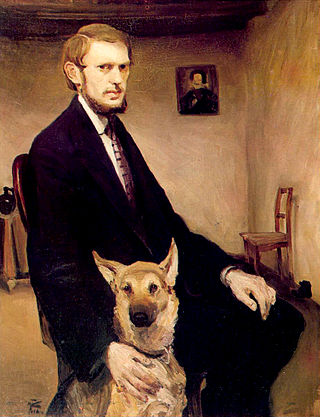
Miroslav Kraljević was a Croatian painter, printmaker and sculptor, active in the early part of the 20th century. He is one of the founders of modern art in Croatia.
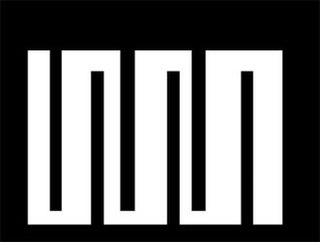
Julije Knifer was a Croatian abstract painter and a founding member of the 1960s Croatian art collective known as the Gorgona Group.
Mladen Stilinović was a Croatian conceptual artist and one of the leading figures of the so-called "New Art Practice" in Croatia. He lived and worked in Zagreb, Croatia.

Vjenceslav Richter was a Croatian architect. He was also known for his work in the fields of urbanism, sculpture, graphic arts, painting and stage design.

The Croatian Museum of Naïve Art is a fine art museum in Zagreb, Croatia dedicated to the work of naïve artists of the 20th century. The museum holdings consist of over 1,900 works of art - paintings, sculptures, drawings and prints, mainly by Croatians but also by other well-known international artists in the genre.
Matija Skurjeni (1898–1990) was a Croatian painter associated with the naïve art movement. He helped to found the Association of Independent Naïve Artists of Croatia and he is considered one of the most influential independent naïve artists. He has five rooms of his work at the Croatian Museum of Naïve Art and many of his works at the Matija Skurjeni Gallery in Zaprešić.
Tomislav Krizman (1882–1955), was a Croatian painter, graphic artist, costume and set designer, teacher, author and organizer of cultural events. He painted in oils and tempera, although he is principally remembered for his remarkable graphic art.

The Porcelain Museum is located in the Casino del Cavaliere, one of the highest points of the Boboli Gardens at the Pitti Palace in Florence, Italy.
Ferdinand Kulmer was a Croatian abstract painter and teacher.
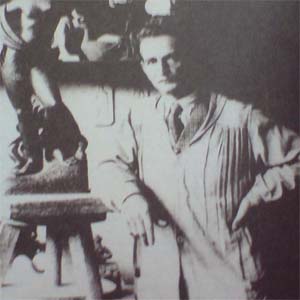
Hinko Juhn was a Yugoslav sculptor, best known for his ceramics. He studied at the Arts & Crafts College in Zagreb and the International Academy in Florence, and took specialist classes in ceramics in the Czech Republic, Germany and at the Vienna School of Applied Arts. On his return to Zagreb, he exhibited his work at the Spring Salon and introduced ceramic techniques to a new generation of Yugoslav artists through his teaching.
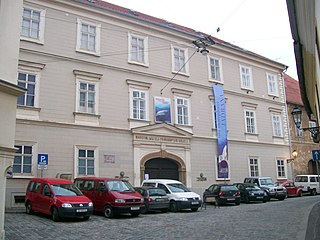
The Croatian Natural History Museum is the oldest and biggest natural history museum and the main body for natural history research, preservation and collection in Croatia. Located on Dimitrije Demeter Street in Gornji Grad, one of the oldest neighbourhoods of the Croatian capital Zagreb, it owns one of the biggest museum collections in Croatia, with over 2 million artefacts, including over 1.1 million animal specimens. It was founded in 1846 as the "National Museum". The National Museum was later split up into five museums, three of which were in 1986 merged as departments of the newly named Croatian Natural History Museum. The museum contains a large scientific library open to the public, and publishes the first Croatian natural history scientific journal, Natura Croatica.

Croatian History Museum is a museum of history located in the Vojković Palace on Antun Gustav Matoš Street in the historic Gornji Grad district of Zagreb, Croatia. The museum holdings consist of around 300,000 objects divided into 17 collections. In addition to a part of the Meštrović Pavilion, it also administers the Ivan Goran Kovačić Memorial Museum in Lukovdol.

The Londonderry Vase is a hard-paste porcelain vase, standing at 54 inches tall. It is decorated with polychrome enamels, gilding and gilt bronze mounts. It bears the Sèvres mark, two intersecting Ls with a letter in the center denoting its creation year (1813-1815) and a crown over the L's to mark it as hard-paste. The vase was commissioned by Napoleon around 1805 to be created by the Sèvres Manufactory. The vase is currently on display at the Art Institute of Chicago.

Maria Baumgartner is an Austrian studio potter and was professor of ceramics at the University of Arts and Industrial Design Linz.
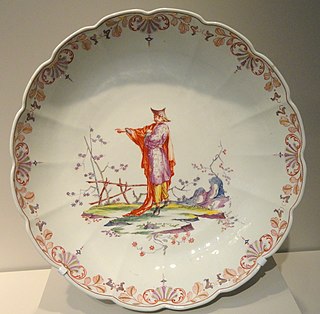
Vienna porcelain is the product of the Vienna Porcelain Manufactory, a porcelain manufacturer in Alsergrund in Vienna, Austria. It was founded in 1718 and continued until 1864.


















